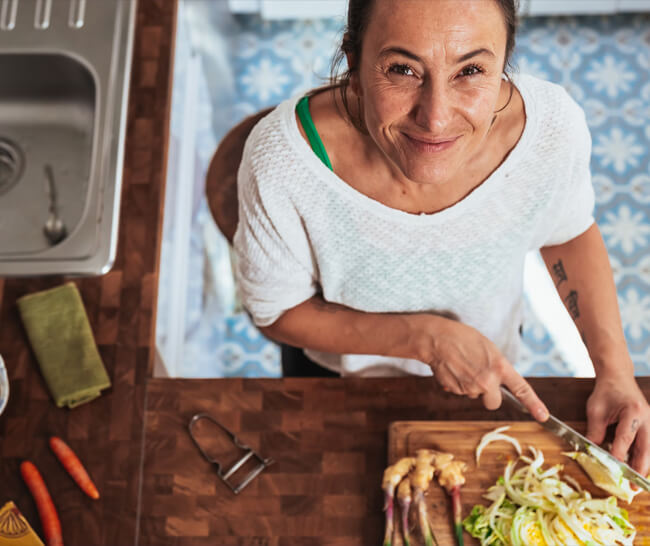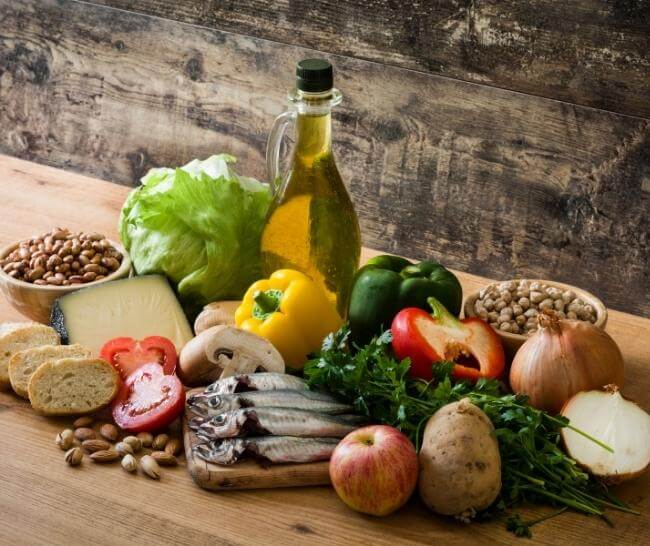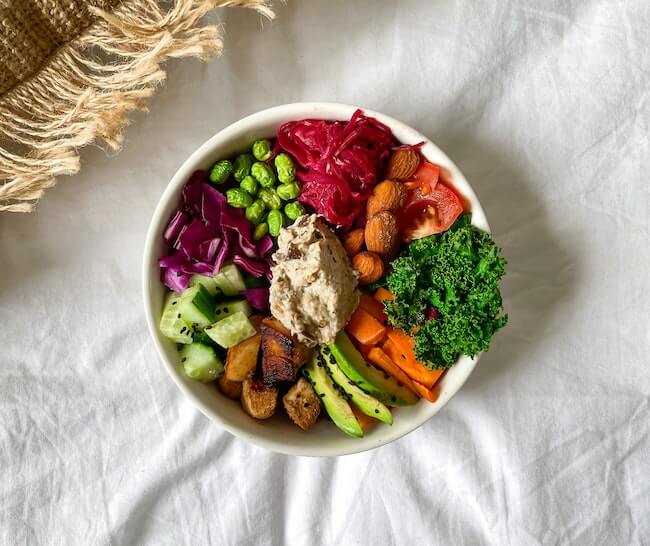In recent years, the term "gluten-free" has become a buzzword in the realm of nutrition and wellness. But what exactly is gluten, and why has it garnered so much attention? Gluten is a protein composite found in wheat, barley, rye, and their derivatives. While it provides elasticity to dough, aiding in the rising process of bread and other baked goods, gluten can also pose a significant challenge for individuals with gluten-related disorders.1
For some, the consumption of gluten can trigger a range of uncomfortable symptoms and, in more severe cases, lead to chronic medical conditions. This protein has been linked to conditions such as celiac disease, wheat allergy, and non-celiac gluten sensitivity (NCGS), each manifesting with its own set of symptoms and health implications.2
This article aims to explain what gluten is, its impact on health, and the benefits of opting for a gluten-free diet. The article also provides a comprehensive list of gluten-free foods to include in your diet and a list of those to avoid.
{{mid-cta}}
Why Go Gluten-Free?
A gluten-free diet serves as a crucial therapeutic intervention for individuals with specific medical conditions such as celiac disease, NCGS, and wheat allergy. If these individuals continue to consume gluten, it can result in long-term complications, including malabsorption of nutrients, nutritional deficiencies, osteoporosis, infertility, and an increased risk of other autoimmune disorders and certain cancers.
Symptom Alleviation in Celiac Disease
A gluten-free diet is the primary and only treatment for celiac disease, leading to the resolution of symptoms such as abdominal pain, diarrhea, fatigue, and weight loss.3
Relief from Gastrointestinal Distress in NCGS
Individuals with NCGS often experience bloating, constipation, abdominal pain, and diarrhea, which can be significantly reduced or eliminated by adhering to a gluten-free diet.2
Improvement in Irritable Bowel Syndrome (IBS) Symptoms
Some individuals with IBS find relief from symptoms like abdominal pain and irregular bowel movements by adopting a gluten-free diet. However, the relationship between gluten and IBS is complex and varies among individuals.4
Prevention of Allergic Reactions in Wheat Allergy
A gluten-free diet is essential for those with wheat allergy to prevent allergic reactions such as hives, difficulty breathing, and anaphylaxis.5
Treatment for Dermatitis Herpetiformis
Dermatitis herpetiformis, a skin manifestation of celiac disease, can be effectively managed by eliminating gluten, leading to a reduction in skin lesions and itching.6
Neurological Symptom Improvement in Peripheral Neuropathy
For individuals with peripheral neuropathy associated with gluten sensitivity, adopting a gluten-free diet may help alleviate neurological symptoms like tingling and numbness.2
Management of Gluten Ataxia
Gluten ataxia, a rare neurological condition linked to gluten sensitivity, causes the body’s immune system to attack the nervous system in response to ingesting gluten. One may see improvement or stabilization of symptoms such as coordination difficulties with the implementation of a gluten-free diet.2
Enhanced Nutrient Absorption and Bone Health
By treating celiac disease with a gluten-free diet, individuals can improve nutrient absorption and address deficiencies, particularly in vitamins and minerals like iron, calcium, and vitamin D, thus promoting bone health.3
Which Foods Contain Gluten?

Adhering to a gluten-free diet necessitates meticulous consideration of food choices, thorough scrutiny of ingredient lists, and a keen awareness of nutritional content to maintain dietary compliance. Many processed foods contain hidden sources of gluten. It’s always recommended to read ingredient labels on packaged foods to determine if they are safe to consume on a gluten-free diet. Here’s a list of common gluten-containing foods.1
- Grains<p style="margin: 0;"> including bulgur, farro, couscous, barley, semolina, spelt, and rye<p>
- Bread<p style="margin: 0;"> all wheat-based bread<p>
- Pasta<p style="margin: 0;"> all wheat-based pasta<p>
- Cereals<p style="margin: 0;"> most types of cereal contain gluten unless they are labeled gluten-free <p>
- Baked Goods<p style="margin: 0;"> cakes, cookies, muffins, bread crumbs, and pastries<p>
- Snack Foods<p style="margin: 0;"> candy, muesli, crackers, roasted nuts, flavored chips, pretzels<p>
- Beverages<p style="margin: 0;"> beer and some alcoholic beverages <p>
- Sauces<p style="margin: 0;"> malt vinegar, soy sauce, teriyaki sauce, hoisin sauce, marinades, and salad dressings <p>
- Seasonings<p style="margin: 0;"> some manufacturers add flour to seasonings as thickeners and to prevent caking, so be sure to check each product’s label
<p class="pro-tip"><strong>Also Read: </strong><a href="/gluten-free-christmas-desserts">30 Gluten-Free Desserts to Enjoy This Christmas</a>.</p>
List of Gluten-Free Foods
The following foods are naturally gluten-free, but it's crucial to verify labels for any potential additives or processing agents that may introduce gluten. As with any dietary restriction, individuals should diligently check labels and, if necessary, choose items labeled as gluten-free products.
Fruits
Fruits are naturally gluten-free. The following is not an exhaustive list of gluten-free fruits. Generally, most fruits should be safe to eat on a gluten-free diet. Be cautious if any additives or flavorings are added to these fruits.
- Apples
- Bananas
- Berries (strawberries, blueberries, raspberries, etc.)
- Citrus fruits (oranges, lemons, limes, grapefruits)
- Grapes
- Kiwi
- Mango
- Pineapple
Vegetables
Like fruits, vegetables are naturally gluten-free. The following is not an exhaustive list of gluten-free vegetables. Generally, most vegetables should be safe to eat on a gluten-free diet. Be cautious if any additives or flavorings are added to these vegetables.
- Broccoli
- Carrots
- Spinach
- Kale
- Bell peppers
- Zucchini
- Cucumbers
- Tomatoes
Grains
There are many gluten-free breads and gluten-free, whole grains available in local grocery stores. Always check the packaging to ensure the product is labeled gluten-free and has gluten-free grains listed on the ingredients list.
- Quinoa
- Brown rice
- Buckwheat
- Sorghum
- Tapioca
- Millet
- Amaranth
- Teff
Proteins
Proteins are naturally gluten-free. The following is not an exhaustive list of gluten-free proteins. Generally, most proteins should be safe to eat on a gluten-free diet. Be cautious of any processed proteins, as some are made with gluten.
- Chicken
- Turkey
- Tofu
- Fish (salmon, tuna, cod, etc.)
- Eggs
- Beef
- Pork
- Lamb
- Shellfish (shrimp, crab, lobster)
Dairy Products
Dairy products are naturally gluten-free. The following is not an exhaustive list of gluten-free dairy products. Generally, most dairy products should be safe to eat on a gluten-free diet. Be cautious if any additives or flavorings are added to these dairy products.
- Milk
- Butter
- Cheese (cheddar, mozzarella, Swiss, etc.)
- Yogurt
- Sour cream
- Cottage cheese
- Cream
- Cream cheese
Fats and Oils
Fats and oils are naturally gluten-free. The following is not an exhaustive list of gluten-free fats. Generally, most fats should be safe to eat on a gluten-free diet. Be cautious if additives or flavorings are added to these fats or oils.
- Olive oil
- Coconut oil
- Canola oil
- Vegetable oil
- Avocado oil
- Peanut oil
- Sesame oil
- Butter
Beverages
- Water
- Coffee
- Tea (black, green, herbal)
- 100% fruit juice
- Milk (cow's milk, almond milk, soy milk, etc.)
- Coconut water
- Fruit-infused water
- Wine
How to Get Started With a Gluten-Free Diet

Remember, adopting a gluten-free diet can initially seem challenging, but with time and persistence, it becomes a routine that promotes better health and well-being for those with gluten-related disorders. If you have specific medical conditions related to gluten sensitivity, consult with healthcare professionals or a registered dietitian for personalized guidance.
Educate Yourself
Take the time to learn about gluten-containing foods and ingredients. Familiarize yourself with common sources of gluten and hidden sources in processed foods. This knowledge will empower you to make informed choices while grocery shopping and dining out.
Read Labels Thoroughly
Develop the habit of carefully reading food labels to identify gluten-containing ingredients. Look for terms like wheat, barley, rye, malt, and their derivatives. Additionally, be aware of potential cross-contamination warnings. Many products now carry gluten-free certification labels for easier identification.
Explore Gluten-Free Alternatives
Discover gluten-free alternatives for your favorite food products. Fortunately, many gluten-free substitutes are available, such as rice flour, almond flour, and gluten-free oats. Experiment with gluten-free baking and cooking to find options that suit your taste preferences.
Connect With Supportive Communities
Join online or local support groups for individuals following a gluten-free lifestyle. These communities can provide valuable insights, share recipes, and offer emotional support. Connecting with others who have similar experiences can make the transition to a gluten-free diet more manageable and enjoyable.
Communicate With Restaurants and Dining Establishments
Don't hesitate to communicate your dietary needs with restaurant staff when dining out. Many establishments are now familiar with gluten-free requirements and can accommodate your preferences. Ask about gluten-free menu options or modifications to existing dishes to ensure a safe dining experience.
Learn More About Healthy Nutrition With Signos’ Expert Advice
Embarking on a journey toward better nutrition and adopting healthier eating habits is a transformative step toward overall well-being. If you're eager to delve deeper into the realm of nutrition and explore personalized guidance, consider seeking expert advice from Signos.
Discover the impact of your diet, exercise routine, sleep quality, and stress levels on your blood sugar with Signos. Cultivate these positive habits on a daily basis to experience improvements in your overall health, achieve weight loss, and more. Want more? We offer a variety of nutrition and healthy habits content on our blog.
Determine if Signos is the right match for you by completing a brief quiz. Gain insights into how Signos can cater to your specific needs and contribute to your journey toward improved health and nutrition. Take the quiz now to discover a personalized approach to well-being!
<p class="pro-tip"><strong>Learn More: </strong><a href="gluten-free-low-carb">Is Gluten-Free Low-Carb? Here’s What You Need to Know</a>.</p>
- Item 1
- Item 2
- item 3
Topics discussed in this article:
References
- Raman, R. (2023, April 4). A beginner’s guide to a gluten-free diet. Healthline. https://www.healthline.com/nutrition/gluten-free-diet
- Barbaro, M. R., Cremon, C., Stanghellini, V., & Barbara, G. (2018). Recent advances in understanding non-celiac gluten sensitivity. F1000Research, 7, 1631. https://doi.org/10.12688/f1000research.15849.1
- Cabanillas, B. (2019). Gluten-related disorders: Celiac disease, wheat allergy, and nonceliac gluten sensitivity. Critical Reviews in Food Science and Nutrition, 60(15), 2606–2621. https://doi.org/10.1080/10408398.2019.1651689
- Aziz, I., Trott, N., Briggs, R., North, J. R., Hadjivassiliou, M., & Sanders, D. S. (2016). Efficacy of a gluten-free diet in subjects with irritable bowel syndrome-diarrhea unaware of their HLA-DQ2/8 genotype. Clinical Gastroenterology and Hepatology, 14(5). https://doi.org/10.1016/j.cgh.2015.12.031
- Burkhardt, J. G., Chapa-Rodriguez, A., & Bahna, S. L. (2017). Gluten sensitivities and the allergist: Threshing the grain from the Husks. Allergy, 73(7), 1359–1368. https://doi.org/10.1111/all.13354
- Rashtak S, Marietta EV, Murray JA. Celiac sprue: a unique autoimmune disorder. Expert Rev Clin Immunol. 2009 Sep;5(5):593-604. doi: 10.1586/eci.09.30. PMID: 20477645; PMCID: PMC3228242.


.jpg)





























